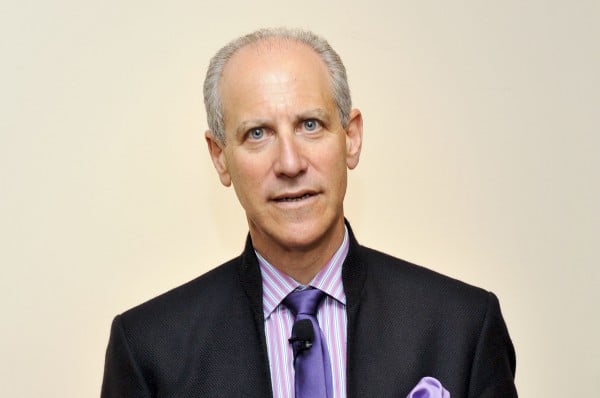People
Museum of Modern Art Reveals Glenn Lowry’s Whopping $2.1 Million Pay Amid Staff Protest Over Benefit Cuts
Lowry's payout was his richest since joining the museum in 1995.

Lowry's payout was his richest since joining the museum in 1995.

Philip Boroff

In one of the richest payouts for a U.S. museum executive, Museum of Modern Art Director Glenn Lowry earned $2.1 million in salary, bonus, and benefits in 2013.
The museum disclosed the 15 percent increase in its latest tax return, made available to artnet News upon request. The disclosure comes as the private, tax-exempt institution seeks a new contract with administrative, curatorial, and other staff represented by UAW Local 2110.
Tuesday night, members protested outside the annual Party in the Garden gala against a proposal to require increased contributions toward health care premiums (see MoMA Curators and Workers Protest Healthcare Cuts During Glitzy Garden Party and What’s Behind the Museum of Modern Art’s Bitter Battle with Its Own Workers?). The last contract mandated a 3.5 percent salary increase in the past year, with visitor assistants starting at $29,000.
“It’s certainly a startling contrast,” Maida Rosenstein, president of Local 2110, said in a telephone interview. “If they pay the top echelon top dollar, they should be able to give good health care to the employees.”
Kim Mitchell, a museum spokeswoman, confirmed that Lowry’s $2.1 million package was his richest since joining the museum in 1995. She declined to comment about the labor talks, aside from expressing optimism about a “positive outcome for the staff and all concerned.”
Here’s how Lowry’s 2013 payment breaks down: He earned $739,620 in salary, a $360,000 annual bonus, $646,259 in retirement and deferred pay, and $348,979 in benefits. About $318,000 of those benefits represent the value of the free housing that Lowry is given in an apartment owned by the museum and located in the adjacent Museum Tower condominium, where he’s required to live and entertain, Mitchell said. As for payment toward health care premiums (at issue in the contract negotiations with staffers), Lowry pays 25 percent, as does everyone at the museum with a salary over $175,000, as per Mitchell.
When including a “multi-year performance bonus” that accumulated since 2009 and was paid out in 2013, Lowry’s compensation totaled $3.4 million. MoMA said it disclosed most of the bonus in prior tax returns. Success in “budget control” contributed to the five-year bonus, as did growing the endowment, leading museum staff, and expanding the museum’s exhibitions of contemporary art, according to the return. The museum endowment was $380 million as of June 2014, up from $249 million in June 2009.
Lowry has regularly topped the lists of best-paid museum directors (see How the Metropolitan Museum Rewards Its Own and Art World Bias by the Numbers). As a basis for his top-dollar remuneration, MoMA has repeatedly cited its balanced budgets, growing attendance, and the Islamic scholar’s fundraising prowess. The museum’s annual expenses top $220 million.
“It’s a nonprofit but it’s also a business,” said James Abruzzo, a nonprofit executive compensation consultant and recruiter with DHR International. “The board is paying him because they think he’s worth it.”
Abruzzo said the timing of the tax return is awkward given the labor negotiations. “If they could’ve filed it a little later I would’ve recommended that.”
Among other of the museum’s executives, in 2013, Chief Operating Officer James Gara earned $1.2 million in pay and benefits, Chief Investment Officer Frank Ahimaz made $756,000, Associate Director Kathy Halbreich was paid $532,000, Ann Temkin, chief curator for painting and sculpture, got $353,000, and Klaus Biesenbach, chief curator at large, received $315,000.
MoMA’s uptown rival, the Metropolitan Museum of Art, paid its leader more modestly for the same period, especially given a budget that’s nearly double that of MoMA. Thomas Campbell, the director since 2009, made $1.3 million, according to its tax return , including benefits and housing. Campbell was out-earned by his chief investment officer, Suzanne Brenner, a 16-year Metropolitan Museum veteran whose compensation was listed at $1.2 million. That includes deferred pay that may be forfeited if she leaves the museum. Its long-term investment portfolio grew by 15 percent to $3 billion in the year ending in June 2014, before endowment spending and gifts.
UPDATE: MoMA Chief Financial Officer Jan Postma said in an interview that the endowment numbers in financial statements refer only to money donated for specific purposes. Citing the statements, he said total investments as of June 2014 were $849 million.